3D CAD Modelling
This is an incubator designed to be retrofitted onto an existing record player. Since our goal is to represent the growth of cultures through audio, the design criteria required:
- Detection: Visually detect the growth of an entire petri dish (the size of a vinyl record) using a camera without occlusions
- Compatibility: Ensure the heat generation from the incubation will not degrade the enclosure and produce unwanted molecules/gas
- Accessible: Easily change out by-hand the culture plates; easily monitor the plates
 Utilizing Rhinoceros 3D modelling software, we modelled our record player.
Utilizing Rhinoceros 3D modelling software, we modelled our record player.
Based on the specifications of our camera module, we calculated the minimum height that is required in order to image a 12” petri dish based on the field of view of our camera.
Specifications of our camera module:
- Angle of View: 54 x 41 degrees
- Field of View: 2.0 x 1.33 m at 2 m
- Full-frame SLR lens equivalent: 35 mm
- Fixed Focus: 1 m to infinity
- Max frame rate: 30fps
We confirmed our calculations by conducting an initial test:



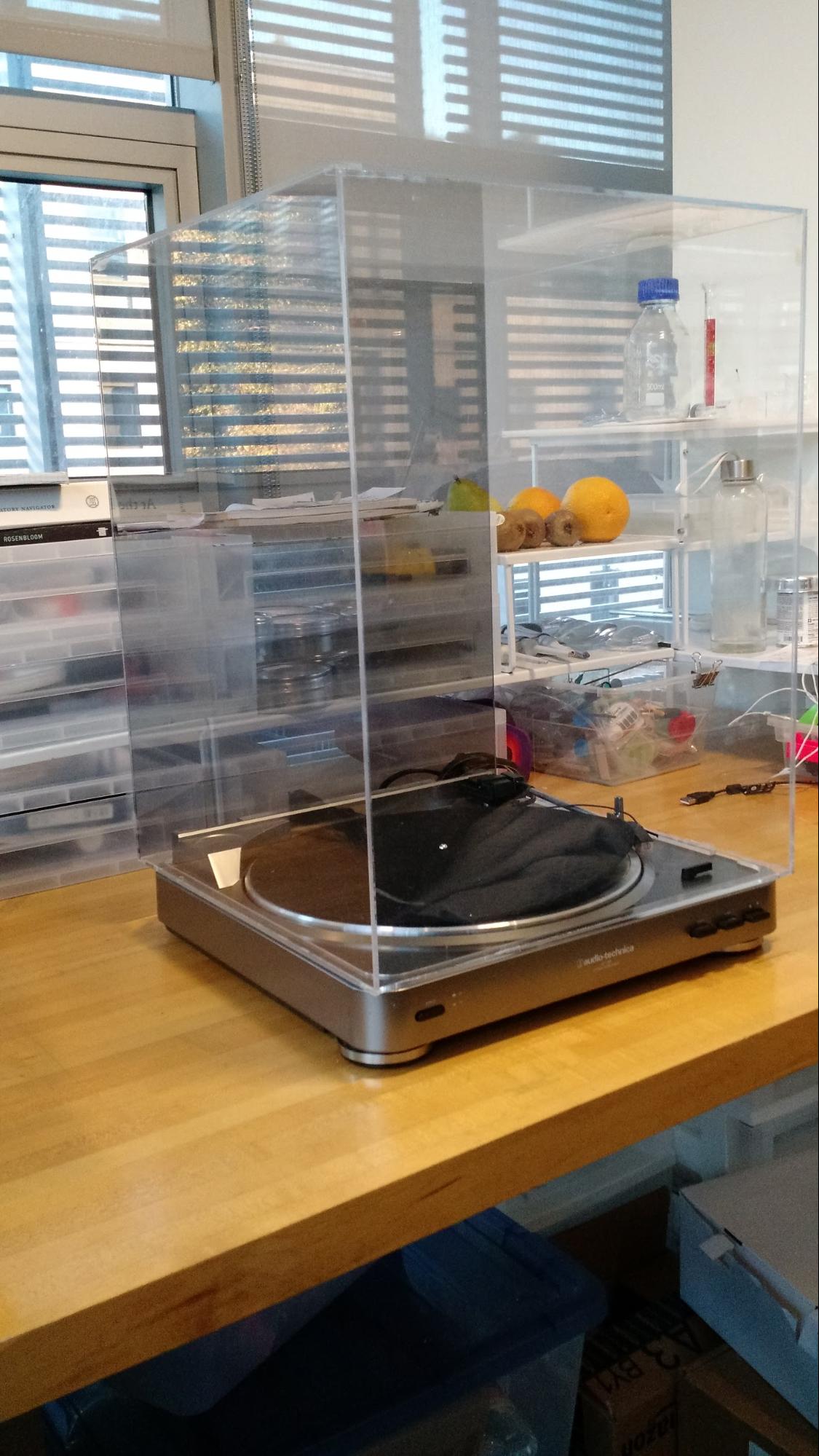
 Once fully integrated, the incubator tray is nearly invisible
Once fully integrated, the incubator tray is nearly invisible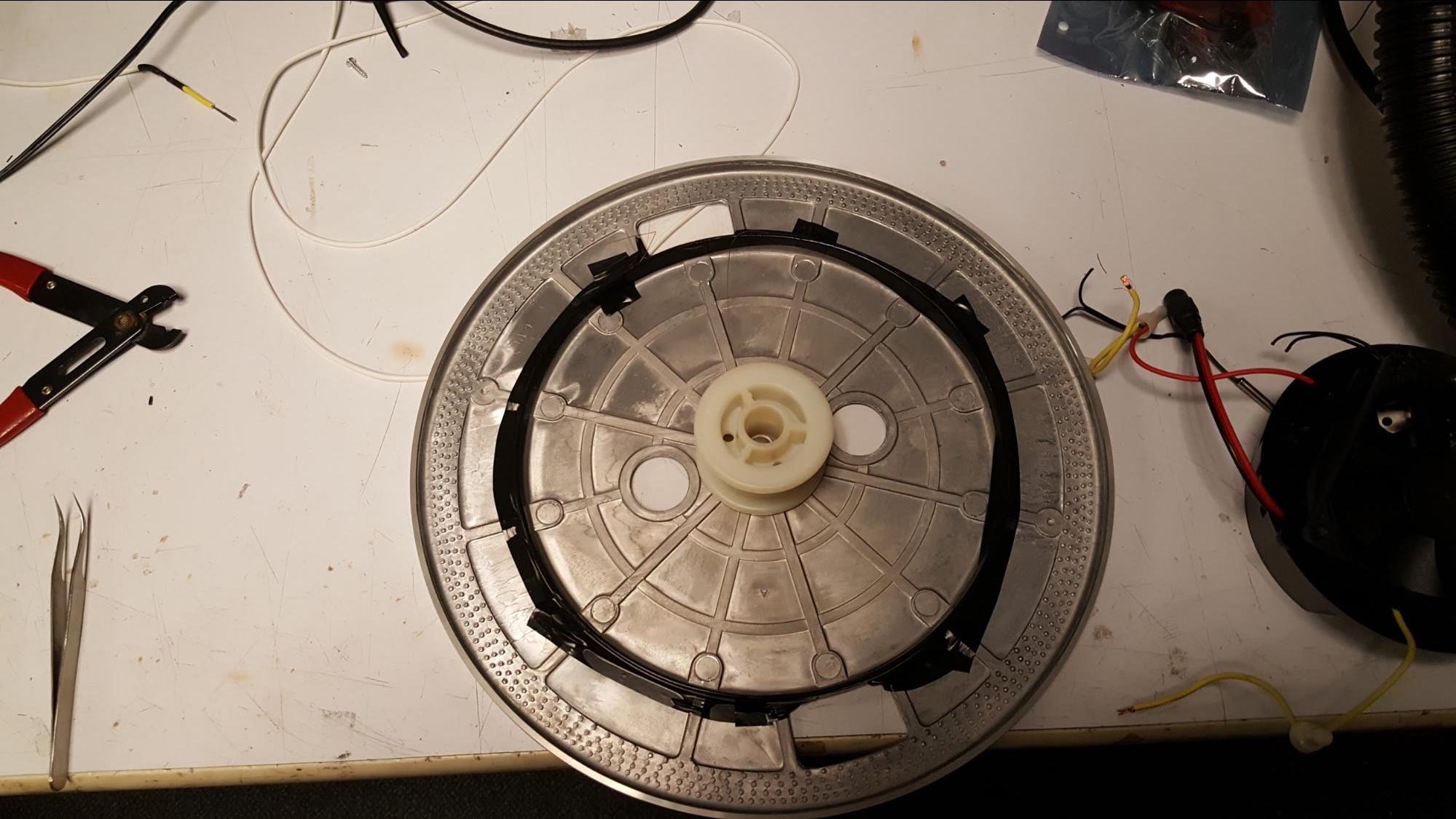
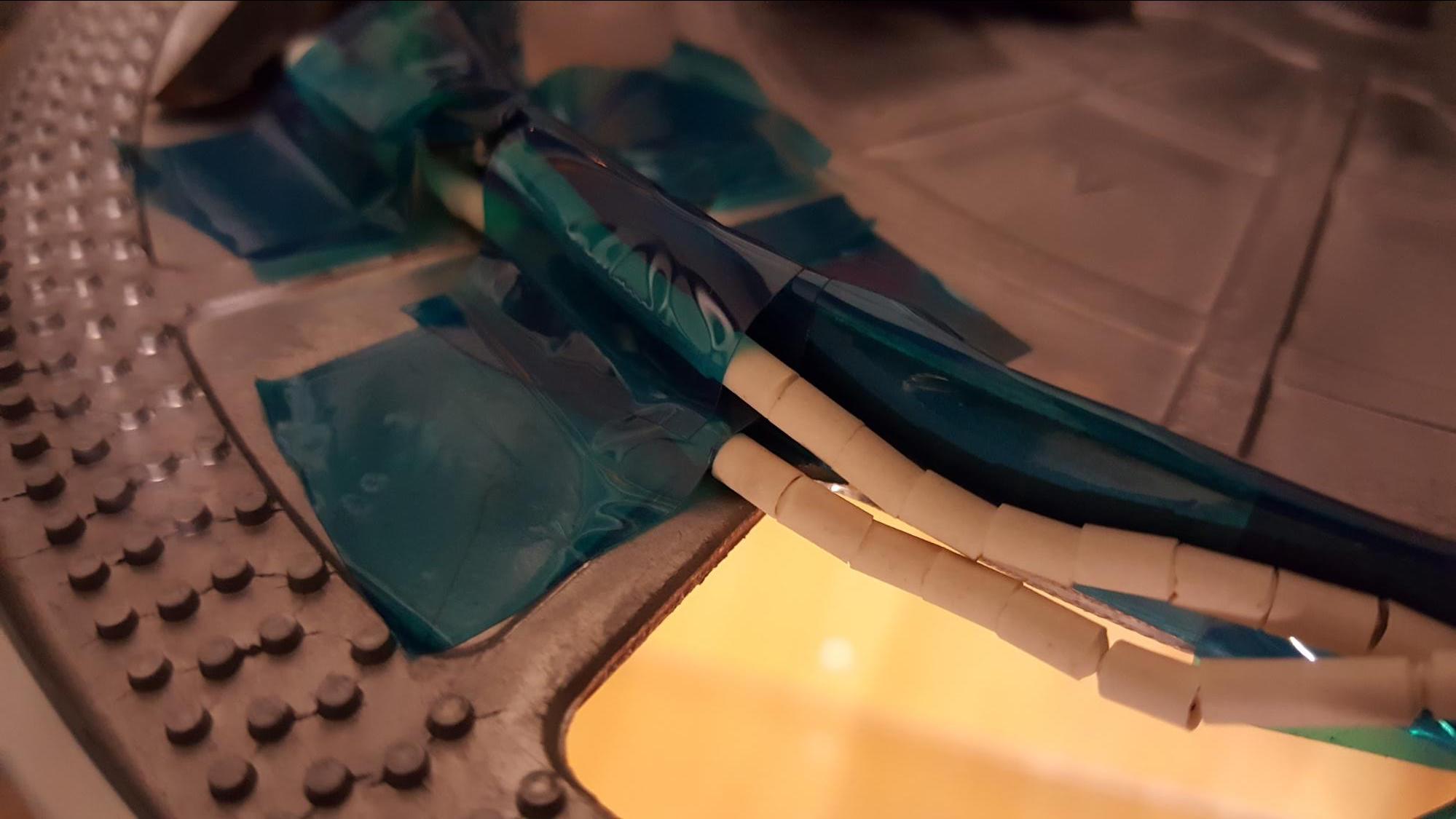
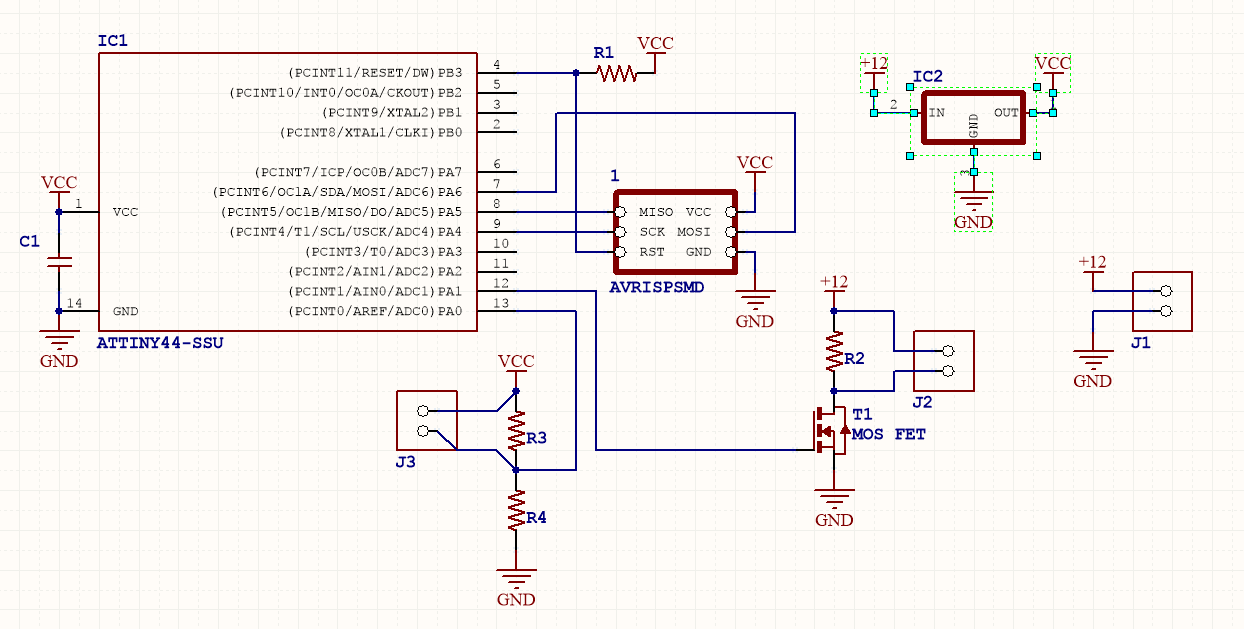
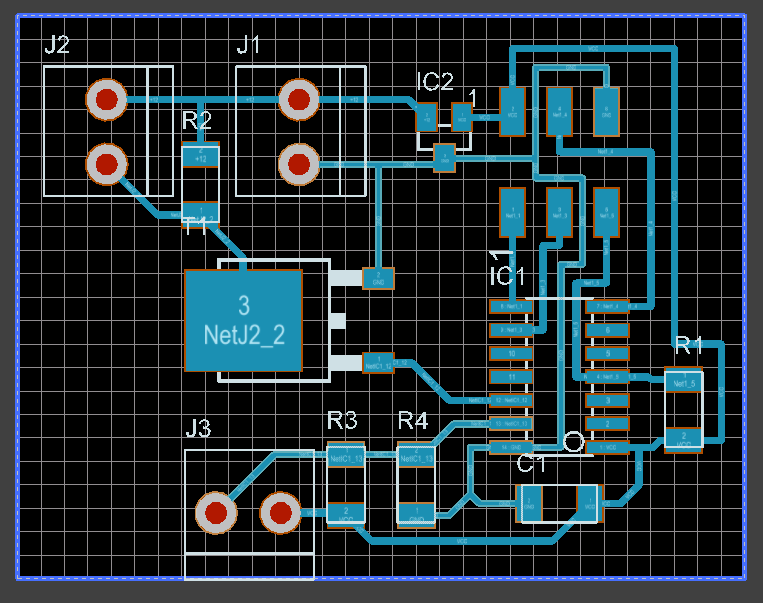
 Power wire from board is snaked up through an existing hole.
Power wire from board is snaked up through an existing hole. Additional reinforcement.
Additional reinforcement. Heating element connected and attached
Heating element connected and attached